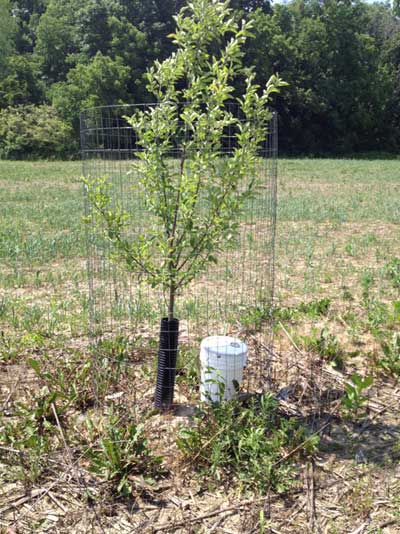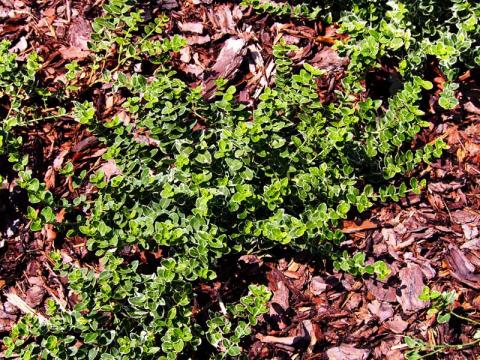Branden Throgmorton of Franklin, Indiana, about 20 miles from Indianapolis, is a newcomer to the Mossy Oak GameKeeper ProStaff, joining the team about a year ago.
 I just bought 10 blight-resistant Dunstan chestnut trees that are a cross between the American chestnut and the Chinese chestnut trees. Certain varieties of oak trees produce nuts every three years or every other year. But these chestnut trees produce nuts every year and are fast growing. We had already planted 10 Dunstans and just bought 10 more to plant. We also bought apple trees and planted an apple orchard. We began planting apple trees about three years ago, and we’re attempting to add more apple trees every year. We’ve got 15 apple trees now. I plant different varieties of apple trees, which are all fruit bearing. There’s Jonathan apple trees on the property, as well as Winesap, an heirloom apple tree. We bought 2- to 3-year-old trees and planted them two years ago. Last year we did get a few apples. We’re hoping this year to have even more apples.
I just bought 10 blight-resistant Dunstan chestnut trees that are a cross between the American chestnut and the Chinese chestnut trees. Certain varieties of oak trees produce nuts every three years or every other year. But these chestnut trees produce nuts every year and are fast growing. We had already planted 10 Dunstans and just bought 10 more to plant. We also bought apple trees and planted an apple orchard. We began planting apple trees about three years ago, and we’re attempting to add more apple trees every year. We’ve got 15 apple trees now. I plant different varieties of apple trees, which are all fruit bearing. There’s Jonathan apple trees on the property, as well as Winesap, an heirloom apple tree. We bought 2- to 3-year-old trees and planted them two years ago. Last year we did get a few apples. We’re hoping this year to have even more apples.
We’re planning on living on this land for a long time, and that’s one of the reasons we wanted to make an investment in these fruit and nut trees. I always remember an old saying, “A patient person plants trees.” You have to continuously care for them. Clearing away some of the growth underneath the trees removes competition for water. I’m also planning to put some cages around the trees to keep the deer from eating them. I’ve found a couple of patches of bull thistle, another invasive species that I’ll spray with a herbicide to get rid of it.
This coming fall, I plan to put in a watering hole on my land. I’m going to push out a hole with a bulldozer on the edge of the woods, put in a plastic liner where we often bowhunt and try to keep that watering hole filled with water. Then deer and other wildlife will have a place to drink, especially during the early fall and bow season. Oftentimes when planting for wildlife, we overlook the need for water for wildlife, especially in places where there’s drought potential.






























